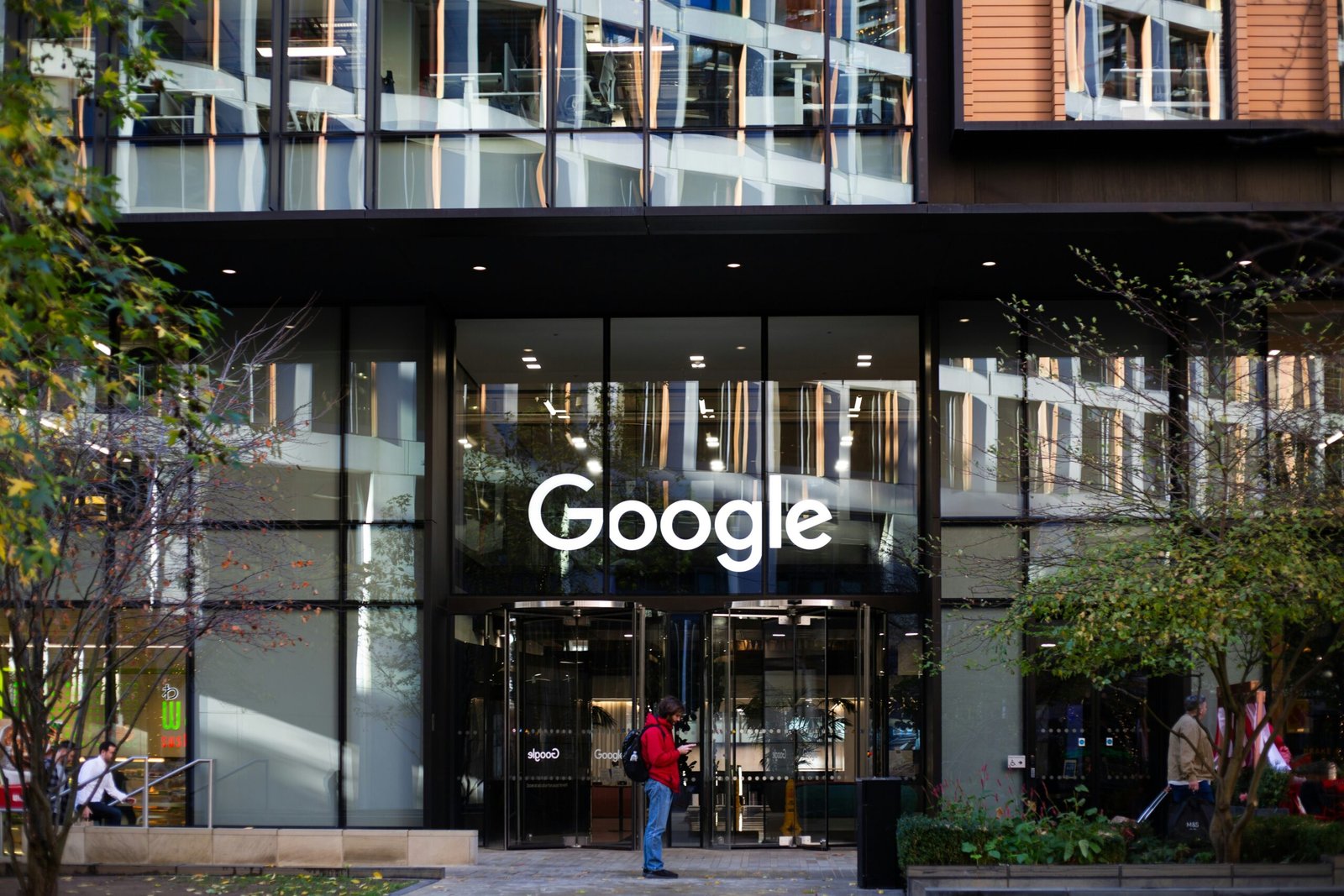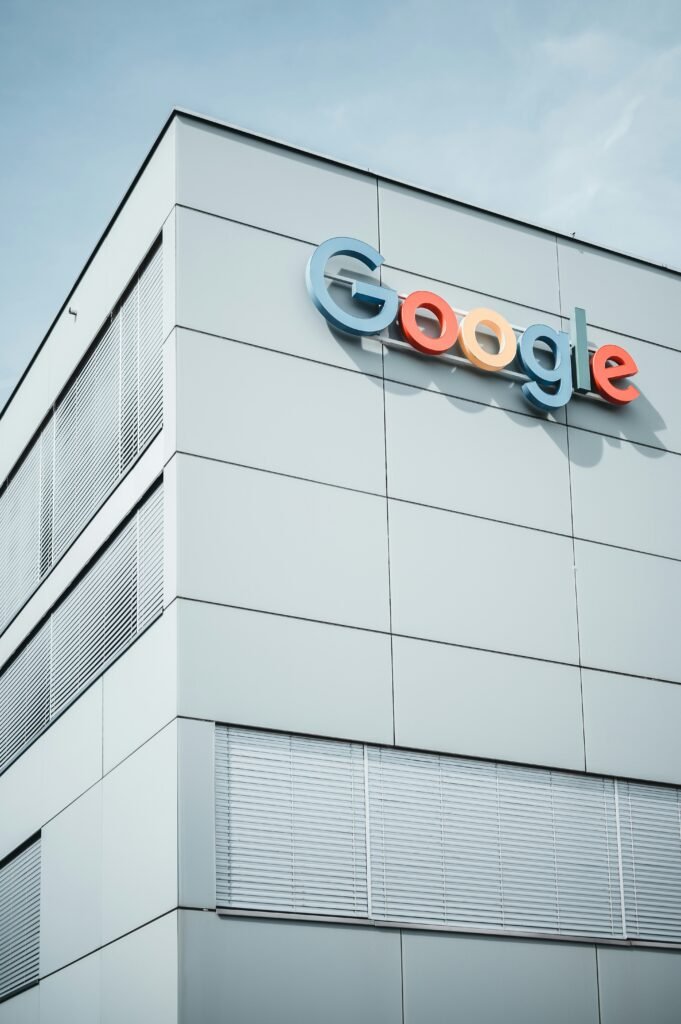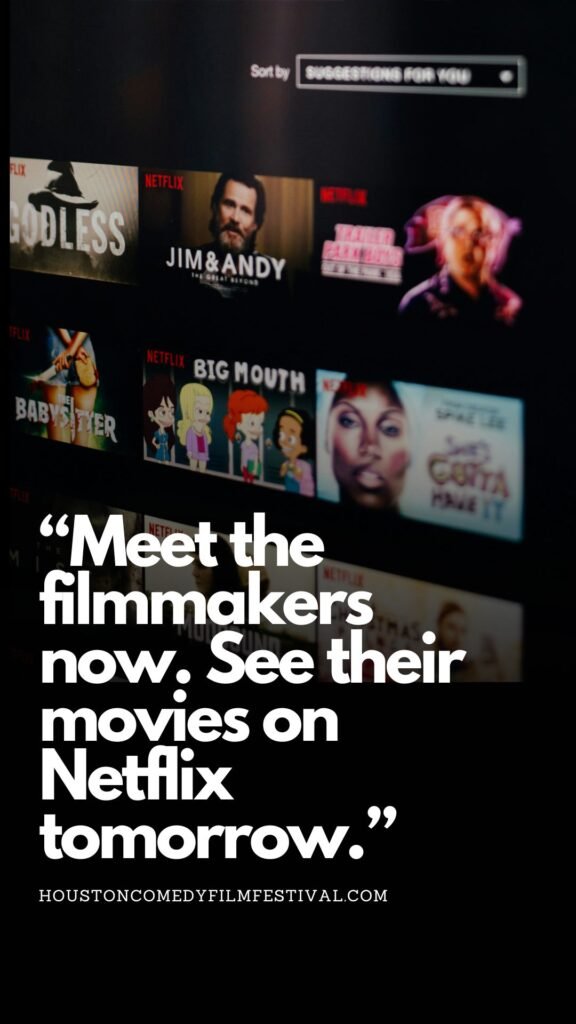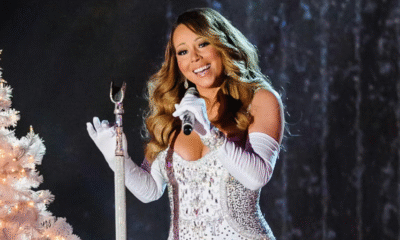Business
Top 5 misconceptions about the economy in 2023 on December 28, 2023 at 11:15 am Business News | The Hill
2023 was a year in which many experts got a lot of things wrong about the economy.
From mistaken forecasts about an impending recession to errors about falling prices and why they had risen in the first place, 2023 was a year marked by economic confusion.
Even the Federal Reserve got disoriented, predicting an economic downturn at the beginning of the year and then yanking that prediction over the summer.
This waffling peeved some major players in the financial industry, including JPMorgan Chase CEO Jamie Dimon, who called the Fed out for providing unreliable guidance and being “100 percent dead wrong.”
“Central banks 18 months ago were 100 percent dead wrong. Maybe there should be humility about financial forecasting,” he said during a panel event in Saudi Arabia in October.
Here’s a look back at some of the biggest misconceptions about the economy of 2023.
Rising interest rates are sure to cause a recession
There was virtual certainty among economists at the end of last year that 2023 would see a recession. The debate was whether that recession would be short-lived and relatively superficial or long and serious, entailing a major spike in unemployment.
“The recession we have now been anticipating for nine months draws nearer,” Deutsche Bank analysts Peter Hooper and David Folkerts-Landau wrote in November of last year. “Our expectation for a recession in the US by mid-2023 has strengthened.”
That incorrect forecasting was based on the assumption that rising interest rates would directly slow the economy, tanking markets and causing workers to be fired.
“The economic downturns along with the aggressive monetary tightening and geopolitical and commodity shocks that induce them will be temporarily painful in financial and emerging markets. We see major stock markets plunging 25 percent from levels somewhat above today’s when the US recession hits, but then recovering fully by year-end 2023, assuming the recession lasts only several quarters,” Folkerts-Landau and Hooper wrote.
But the Fed’s program of tightening led neither to mass unemployment nor to a stock market dive. On the contrary, gross domestic product surged to a 4.9-percent quarterly increase during the third quarter.
The most the Dow Jones Industrial Average of major US stocks lost from its November 2022, level was about 7 percent in March of this year. The Dow has since risen 9.5 percent above that level, setting several new records this month, and unemployment has remained below 4 percent.
Unemployment needs to go up for inflation to go down
Economists have long correlated inflation and unemployment in part because employment costs are the major portion of overhead paid by companies. In the third quarter of this year, employee compensation was about 58 percent of real prices, input costs were about 26 percent, and profits were about 16 percent.
To stop rising prices, many economists believed the Fed needed to put the squeeze on workers’ paychecks with higher interest rates and then watch consumer demand and overhead costs fall and prices along with them. Or so the conventional thinking went.
“Persistent levels of inflation suggest the need for reduced economic activity to cool inflation to 2 percent … This would spark job losses, which we do expect to see based on the Fed’s forecasts,” Michael Weisz, president of investment firm Yieldstreet, wrote in an analysis at the end of last year.
But 2023 unbuckled the correlation between unemployment and inflation.
Headline inflation as measured in the consumer price index (CPI) fell from a 6.3-percent annual increase in January off a high last year of nearly 9 percent to just 3.1 percent in November.
The personal consumption expenditures (PCE) price index, a different measure of inflation preferred by the Fed, fell from a 5.5-percent annual increase in January to just 2.6 percent in November – close to the the Fed’s 2-percent target.
The sharp drop in inflation came as the jobless rate barely moved.. Since inflation hit its 9-percent peak last June, unemployment has stayed between 3.4 and 3.9 percent — a far cry from the ranges of 6, 7 and even 10 percent predicted last summer.
Wages aren’t rising for the lowest-paid workers
Amid so much concern over the magnitude and trajectory of inflation, average hourly earnings for all US workers have actually kept pace with rising prices since the pandemic started in March 2020.
In fact, earnings have risen 19.4 percent since February 2020, slightly outpacing the increase in the CPI of 18.8 percent over the same period. Lower-wage workers have seen a greater share of these gains, contributing to a shrinking of income inequality in the US.
For production and nonsupervisory workers, who account for the majority of the U.S. workforce, their wages have increased 21.9 percent since just before the pandemic, more than 3 percentage points higher than the increase in the CPI.
Hospitality and leisure industry staff, who are some of the lowest paid people in the economy, have seen their wages rise 27 percent over the same period.
“The pandemic … [reduced] employer market power and [spurred] rapid relative wage growth among young noncollege workers who disproportionately moved from lower-paying to higher-paying and potentially more-productive jobs,” researchers from the Massachusetts Institute of Technology and the University of Massachusetts Amherst found earlier this year.
Rising markets, low unemployment will make people feel good
Despite solid economic performance data and a lot of salesmanship from the Biden administration, Americans have still been gloomy about the economy — a disconnect lamented and puzzled over by many financial commentators.
A December poll from Bankrate found that most Americans think the economy is currently experiencing a downturn, majorities those earning under $50,000 annually and those making more than $100,000 a year saying they feel like the U.S. economy is in a recession.
This gloom has translated into poor public opinion polling for President Biden. A November poll from Gallup found that just 32 percent of Americans approved of his handling of the economy.
But sentiment could be turning around in a major way. The latest Michigan Survey of Consumer Sentiment found a major brightening of the economic mood across various categories, reversing a fourth-month downward trend.
“These trends are rooted in substantial improvements in how consumers view the trajectory of inflation,” University of Michigan pollsters wrote. “All five index components rose this month, which has only occurred in 10 percent of readings since 1978. Expected business conditions surged over 25 percent for both the short and long run.”
Inflation had a single, clear-cut origin
Democrats and liberal economists have argued that inflation during the past year was caused primarily by supply-side disruptions while Republicans and conservative economists have blamed inflation on higher demand, boosted by trillions of dollars in pandemic stimulus.
Other economists have said the blame should fall mostly with corporations who took the opportunity of consumers’ being flush with cash to raise their prices and boost their profit margins.
The Ukraine war’s effect on energy prices and further variants of the coronavirus that extended the pandemic in 2021 were also fingered as culprits.
In fact, all of these factors contributed to varying degrees to the inflation that took off internationally starting in 2021 and lasted into this year. Holding up any single cause as the lone perpetrator ignores the dynamics between governments and the private sector that underlie the economy and international price system.
“Inflation eases at different rates across countries, due to their economic structures,” United Nations economists wrote in their 2023 trade and development report.
“As the cost of key inputs accelerates, several circumstances allow firms to gain higher profits by setting their prices following the general increasing trend, even if the goods were produced when inputs were cheaper,” they wrote. “Monetary policy is not to be used as a sole policy tool to alleviate inflationary pressures. With supply-side problems still unaddressed, a policy mix is needed to attain financial sustainability.”
Business, Economy, News, federal reserve, Federal reserve rate hikes, inflation, Interest rates, prices, Recession, Stock Market, unemployment, Wages 2023 was a year in which many experts got a lot of things wrong about the economy. From mistaken forecasts about an impending recession to errors about falling prices and why they had risen in the first place, 2023 was a year marked by economic confusion. Even the Federal Reserve got disoriented, predicting an economic…
Business
Google Accused Of Favoring White, Asian Staff As It Reaches $28 Million Deal That Excludes Black Workers

Google has tentatively agreed to a $28 million settlement in a California class‑action lawsuit alleging that white and Asian employees were routinely paid more and placed on faster career tracks than colleagues from other racial and ethnic backgrounds.
- A Santa Clara County Superior Court judge has granted preliminary approval, calling the deal “fair” and noting that it could cover more than 6,600 current and former Google workers employed in the state between 2018 and 2024.

How The Discrimination Claims Emerged
The lawsuit was brought by former Google employee Ana Cantu, who identifies as Mexican and racially Indigenous and worked in people operations and cloud departments for about seven years. Cantu alleges that despite strong performance, she remained stuck at the same level while white and Asian colleagues doing similar work received higher pay, higher “levels,” and more frequent promotions.
Cantu’s complaint claims that Latino, Indigenous, Native American, Native Hawaiian, Pacific Islander, and Alaska Native employees were systematically underpaid compared with white and Asian coworkers performing substantially similar roles. The suit also says employees who raised concerns about pay and leveling saw raises and promotions withheld, reinforcing what plaintiffs describe as a two‑tiered system inside the company.
Why Black Employees Were Left Out
Cantu’s legal team ultimately agreed to narrow the class to employees whose race and ethnicity were “most closely aligned” with hers, a condition that cleared the path to the current settlement.

The judge noted that Black employees were explicitly excluded from the settlement class after negotiations, meaning they will not share in the $28 million payout even though they were named in earlier versions of the case. Separate litigation on behalf of Black Google employees alleging racial bias in pay and promotions remains pending, leaving their claims to be resolved in a different forum.
What The Settlement Provides
Of the $28 million total, about $20.4 million is expected to be distributed to eligible class members after legal fees and penalties are deducted. Eligible workers include those in California who self‑identified as Hispanic, Latinx, Indigenous, Native American, American Indian, Native Hawaiian, Pacific Islander, and/or Alaska Native during the covered period.
Beyond cash payments, Google has also agreed to take steps aimed at addressing the alleged disparities, including reviewing pay and leveling practices for racial and ethnic gaps. The settlement still needs final court approval at a hearing scheduled for later this year, and affected employees will have a chance to opt out or object before any money is distributed.
H2: Google’s Response And The Broader Stakes
A Google spokesperson has said the company disputes the allegations but chose to settle in order to move forward, while reiterating its public commitment to fair pay, hiring, and advancement for all employees. The company has emphasized ongoing internal audits and equity initiatives, though plaintiffs argue those efforts did not prevent or correct the disparities outlined in the lawsuit.
For many observers, the exclusion of Black workers from the settlement highlights the legal and strategic complexities of class‑action discrimination cases, especially in large, diverse workplaces. The outcome of the remaining lawsuit brought on behalf of Black employees, alongside this $28 million deal, will help define how one of the world’s most powerful tech companies is held accountable for alleged racial inequities in pay and promotion.
Business
Luana Lopes Lara: How a 29‑Year‑Old Became the Youngest Self‑Made Woman Billionaire

At just 29, Luana Lopes Lara has taken a title that usually belongs to pop stars and consumer‑app founders.
Multiple business outlets now recognize her as the world’s youngest self‑made woman billionaire, after her company Kalshi hit an 11 billion dollar valuation in a new funding round.
That round, a 1 billion dollar Series E led by Paradigm with Sequoia Capital, Andreessen Horowitz, CapitalG and others participating, instantly pushed both co‑founders into the three‑comma club. Estimates place Luana’s personal stake at roughly 12 percent of Kalshi, valuing her net worth at about 1.3 billion dollars—wealth tied directly to equity she helped create rather than inheritance.

Kalshi itself is a big part of why her ascent matters.
Founded in 2019, the New York–based company runs a federally regulated prediction‑market exchange where users trade yes‑or‑no contracts on real‑world events, from inflation reports to elections and sports outcomes.
As of late 2025, the platform has reached around 50 billion dollars in annualized trading volume, a thousand‑fold jump from roughly 300 million the year before, according to figures cited in TechCrunch and other financial press. That hyper‑growth convinced investors that event contracts are more than a niche curiosity, and it is this conviction—expressed in billions of dollars of new capital—that turned Luana’s share of Kalshi into a billion‑dollar fortune almost overnight.
Her path to that point is unusually demanding even by founder standards. Luana grew up in Brazil and trained at the Bolshoi Theater School’s Brazilian campus, where reports say she spent up to 13 hours a day in class and rehearsal, competing for places in a program that accepts fewer than 3 percent of applicants. After a stint dancing professionally in Austria, she pivoted into academics, enrolling at the Massachusetts Institute of Technology to study computer science and mathematics and later completing a master’s in engineering.
During summers she interned at major firms including Bridgewater Associates and Citadel, gaining a front‑row view of how global macro traders constantly bet on future events—but without a simple, regulated way for ordinary people to do the same.

That realization shaped Kalshi’s founding thesis and ultimately her billionaire status. Together with co‑founder Tarek Mansour, whom she met at MIT, Luana spent years persuading lawyers and U.S. regulators that a fully legal event‑trading exchange could exist under commodities law. Reports say more than 60 law firms turned them down before one agreed to help, and the company then spent roughly three years in licensing discussions with the Commodity Futures Trading Commission before gaining approval. The payoff is visible in 2025’s numbers: an 11‑billion‑dollar valuation, a 1‑billion‑dollar fresh capital injection, and a founder’s stake that makes Luana Lopes Lara not just a compelling story but a data point in how fast wealth can now be created at the intersection of finance, regulation, and software.
Business
Harvard Grads Jobless? How AI & Ghost Jobs Broke Hiring

America’s job market is facing an unprecedented crisis—and nowhere is this more painfully obvious than at Harvard, the world’s gold standard for elite education. A stunning 25% of Harvard’s MBA class of 2025 remains unemployed months after graduation, the highest rate recorded in university history. The Ivy League dream has become a harsh wakeup call, and it’s sending shockwaves across the professional landscape.

Jobless at the Top: Why Graduates Can’t Find Work
For decades, a Harvard diploma was considered a golden ticket. Now, graduates send out hundreds of résumés, often from their parents’ homes, only to get ghosted or auto-rejected by machines. Only 30% of all 2025 graduates nationally have found full-time work in their field, and nearly half feel unprepared for the workforce. “Go to college, get a good job“—that promise is slipping away, even for the smartest and most driven.
Tech’s Iron Grip: ATS and AI Gatekeepers
Applicant tracking systems (ATS) and AI algorithms have become ruthless gatekeepers. If a résumé doesn’t perfectly match the keywords or formatting demanded by the bots, it never reaches human eyes. The age of human connection is gone—now, you’re just a data point to be sorted and discarded.
AI screening has gone beyond basic qualifications. New tools “read” for inferred personality and tone, rejecting candidates for reasons they never see. Worse, up to half of online job listings may be fake—created simply to collect résumés, pad company metrics, or fulfill compliance without ever intending to fill the role.
The Experience Trap: Entry-Level Jobs Require Years
It’s not just Harvard grads who are hurting. Entry-level roles demand years of experience, unpaid internships, and portfolios that resemble a seasoned professional, not a fresh graduate. A bachelor’s degree, once the key to entry, is now just the price of admission. Overqualified candidates compete for underpaid jobs, often just to survive.
One Harvard MBA described applying to 1,000 jobs with no results. Companies, inundated by applications, are now so selective that only those who precisely “game the system” have a shot. This has fundamentally flipped the hiring pyramid: enormous demand for experience, shrinking chances for new entrants, and a brutal gauntlet for anyone not perfectly groomed by internships and coaching.
Burnout Before Day One
The cost is more than financial—mental health and optimism are collapsing among the newest generation of workers. Many come out of elite programs and immediately end up in jobs that don’t require degrees, or take positions far below their qualifications just to pay the bills. There’s a sense of burnout before careers even begin, trapping talent in a cycle of exhaustion, frustration, and disillusionment.
Cultural Collapse: From Relationships to Algorithms
What’s really broken? The culture of hiring itself. Companies have traded trust, mentorship, and relationships for metrics, optimizations, and cost-cutting. Managers no longer hire on potential—they rely on machines, rankings, and personality tests that filter out individuality and reward those who play the algorithmic game best.
AI has automated the very entry-level work that used to build careers—research, drafting, and analysis—and erased the first rung of the professional ladder for thousands of new graduates. The result is a workforce filled with people who know how to pass tests, not necessarily solve problems or drive innovation.
The Ghost Job Phenomenon
Up to half of all listings for entry-level jobs may be “ghost jobs”—positions posted online for optics, compliance, or future needs, but never intended for real hiring. This means millions of job seekers spend hours on applications destined for digital purgatory, further fueling exhaustion and cynicism.
Not Lazy—Just Locked Out
Despite the headlines, the new class of unemployed graduates is not lazy or entitled—they are overqualified, underleveraged, and battered by a broken process. Harvard’s brand means less to AI and ATS systems than the right keyword or résumé format. Human judgment has been sidelined; individuality is filtered out.

What’s Next? Back to Human Connection
Unless companies rediscover the value of human potential, mentorship, and relationships, the job search will remain a brutal numbers game—one that even the “best and brightest” struggle to win. The current system doesn’t just hurt workers—it holds companies back from hiring bold, creative talent who don’t fit perfect digital boxes.
Key Facts:
- 25% of Harvard MBAs unemployed, highest on record
- Only 30% of 2025 grads nationwide have jobs in their field
- Nearly half of grads feel unprepared for real work
- Up to 50% of entry-level listings are “ghost jobs”
- AI and ATS have replaced human judgment at most companies
If you’ve felt this struggle—or see it happening around you—share your story in the comments. And make sure to subscribe for more deep dives on the reality of today’s economy and job market.
This is not just a Harvard problem. It’s a sign that America’s job engine is running on empty, and it’s time to reboot—before another generation is locked out.

 Entertainment4 weeks ago
Entertainment4 weeks agoColombia’s ‘Doll’ Arrest: Police Say a 23-Year-Old Orchestrated Hits, Including Her Ex’s Murder

 Entertainment4 weeks ago
Entertainment4 weeks agoHow The Grinch Became The Richest Christmas Movie Ever

 Entertainment4 weeks ago
Entertainment4 weeks agoMiley Cyrus Is Engaged to Maxx Morando

 Film Industry2 weeks ago
Film Industry2 weeks agoDisney Brings Beloved Characters to ChatGPT After $1 Billion OpenAI Deal

 Business3 weeks ago
Business3 weeks agoLuana Lopes Lara: How a 29‑Year‑Old Became the Youngest Self‑Made Woman Billionaire

 Entertainment4 weeks ago
Entertainment4 weeks agoMariah Carey’s One Holiday Hit Pays her $3.3 Million a Year

 Film Industry3 weeks ago
Film Industry3 weeks agoNetflix Got Outbid: Paramount Drops a $108 Billion Cash Bomb on Warner Bros.

 Entertainment4 weeks ago
Entertainment4 weeks agoAnne Hathaway Just Turned Her Instagram Bio Into a 2026 Release Calendar





























